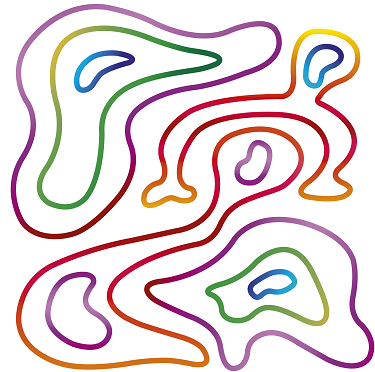Malaysia 2022 Bid Round is Closing Soon
Bell Geospace Technical Gurus will help applicants with The Malaysian Round 2022. Don't miss out on the best geological data to secure a block.

Bell Geospace
Malaysian state's energy sector Petronas announced that they were offering 14 offshore exploration blocks, six clusters of discovered resource opportunities (DRO), and a single cluster of late-life assets (LLA) in their annual bid launched in January.
The 14 exploration blocks given by the Malaysia Bid Round (MBR) are concerned with attracting investors in some provinces like Sabah, and the Sarawak basin where discoveries of oil and gas already existed.
The six clusters; Meranti, Ubah, Baram Jr., A, C, and D are mostly in shallow water and near existing production infrastructure. In addition, other provinces of LLA, which have three cluster fields called Abu Cluster, open a window for new operators to extract the remaining oil and gas from wells using existing facilities.
Petronas’ Senior Vice President of Malaysia Petroleum Management, Mohamed Firouz Asnan, is quoted as saying that there are many more prospects to be considered in the Malaysia basins, with the respective potential of wells to produce about 21 billion barrels of oil annually.
The energy sector has also been provided technical training for the two exploration areas in the northwest Sabah Basin, and the southern Malay Basin, to offer investors a better understanding of the potential of acreages before a bid proposal submission. Petronas has been engaging existing and new investors in participation in a virtual zoom conference meeting- allowing potential investors to conduct seismic data review during the bid-round period. Whilst the Full Tensor Gravity Gradiometry data also available for the rounds was not included in this session, the Bell Geospace team are able to offer the same service to prospective investors on a 1:1 basis.
Full Tensor Gradiometry (FTG) data has been acquired across Malaysia from light aircraft. The technology measures the rate of change of gravity in all the directions caused by subsurface geology. The individual component information is suited for mapping complex geometries of sharp focus geology that generate a density contrast resulting from stratigraphy and structural changes. FTG has been acquired continuously over land and sea and it can be especially useful in transition zones where it is difficult and costly to acquire seismic data.
The Full Tensor Gravity Technology (FTG) has a rotating multi-accelerometer platform that measures the gravity wave and is mounted to the plates spinning to exert a constant force on them. Furthermore, the accelerometer is extremely hyper-sensitive military-grade technology that can measure the change in gravitational fields in the full three dimensions. This platform is mounted inside the FTG instrument which is pressure, temperature, and humidity controlled and enables the most accurate measurement. Since the space exists in three dimensions, therefore, gravitational fields exist in three dimensions as well, which means it has an x, y, and z components which are measured using FTG respectively. FTG is best at seeing shallow subsurface structures and is most effective up to a depth of four kilometers.
It is understood that this technology could be perceived as complex for teams who may not have expertise in house, especially if they are trying to prepare their submissions in a short time period. However, all applicants to the Malaysia 2022 bid rounds can still benefit from the extremely useful and detailed geological information provided with the FTG system. The Bell Geospace technical experts will workshop the data and provide consultative services to support bid round applications. Only days remain to book in and make use of this opportunity and secure the best geoscience knowledge available for the bid rounds in 2022.
Read more and see coverage maps
or contact us by email info@bellgeo,com or chatbot.
Comments can be left below.
Receive Bell Geospace Articles To Your Inbox
Would you like to receive the next installment directly to your email?
